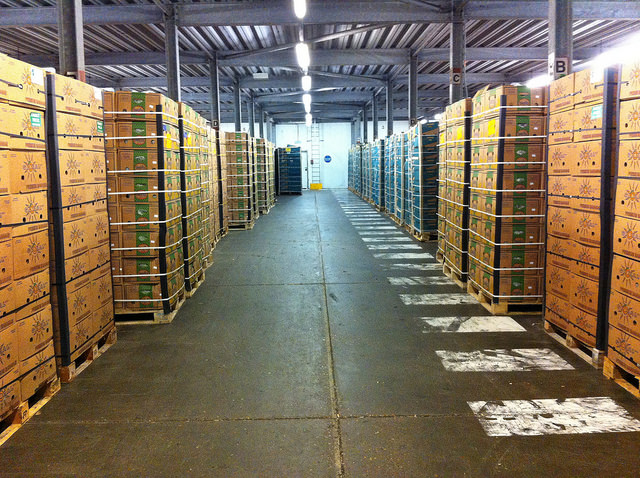
A Fruit Warehouse
Shortcomings in post-harvest infrastructure are often critical factors in determining how much food is lost in the supply chain. A lack of processing equipment, driers, cold chain facilities, storage etc. often lead to the unnecessary loss of produce. It has been pointed out that this is particular evident during particularly productive years (World Bank, 2009). It may also happen during peak seasons, regardless if yields have been particularly high (Timmermans et al., 2014).
Currently India is due to experience a “fat year” where the yields in fruits and vegetables are expected to be particularly high due to an adequate amount of rain across the territory. India is one of the world’s premier producer of fruits and vegetables-the second highest producer of both (Sabharwal, 2016). This has raised concerns-what will happen to the excess produce? Bumper harvests often result in the market getting inundated with excess produce, inevitably leading to lower prices due to market saturation. Subsequently, this will result in a slower flow of produce to markets as farmers attempt to get the best price for their produce. Consequently, this in turn will inevitably result in increased storage time which, if adequate facilities are not present, will lead to increased losses (World Bank, 2009). It is feared that this scenario will unfold in India in the coming months. Warehousing shortfalls already account for 7% of grain losses, 30% of fruits and vegetables and 10% of spices. A shortfall of 35 million metric tonnes exists between available warehousing and demand (Sabharwal, 2016).
The solution is not as simple as merely providing extra storage facilities, although that would almost certainly help. Efficient warehouse management and improving access to credit also represent key interventions (Sabharwal, 2016).
In any case, it can be assumed that implementing remedial measures will be on the radar of the powers that be in India.
For more information visit:
Further Reading
Sabharwal, S. (2016). Are we Ready for the Bumper Harvests? Business World, 14th July 2016. http://www.businessworld.in/article/Are-We-Ready-For-The-Bumper-Harvests-/14-07-2016-100432/#open-jumplist Accessed 22/07/16
Timmermans, A. J. M., Ambuko, J., Belik, W., & Huang, J. (2014). Food losses and waste in the context of sustainable food systems (No. 8). CFS Committee on World Food Security HLPE.
World Bank. (2009). Missing Food :The Case of postharvest Grain Losses in Sub-Saharan African. The World Bank, 60371-AFR(60371), 116. http://doi.org/Report No. 60371-AFR
